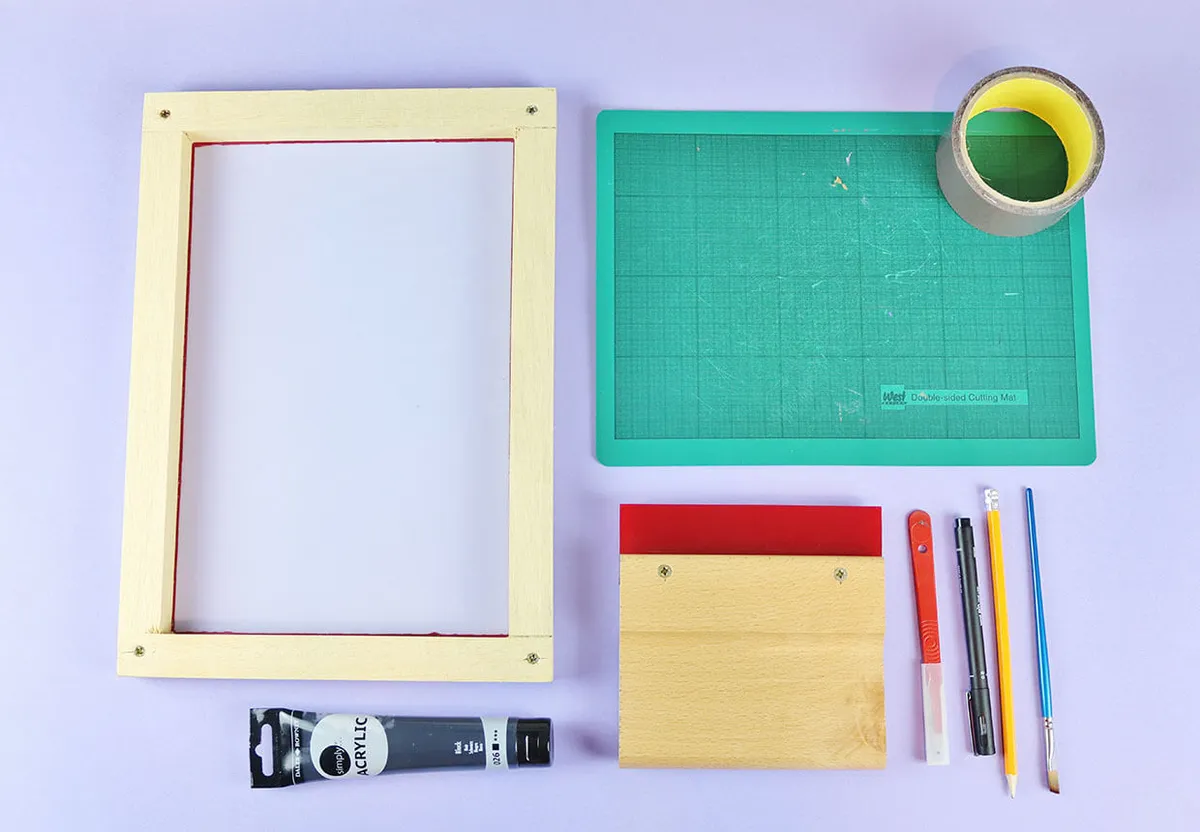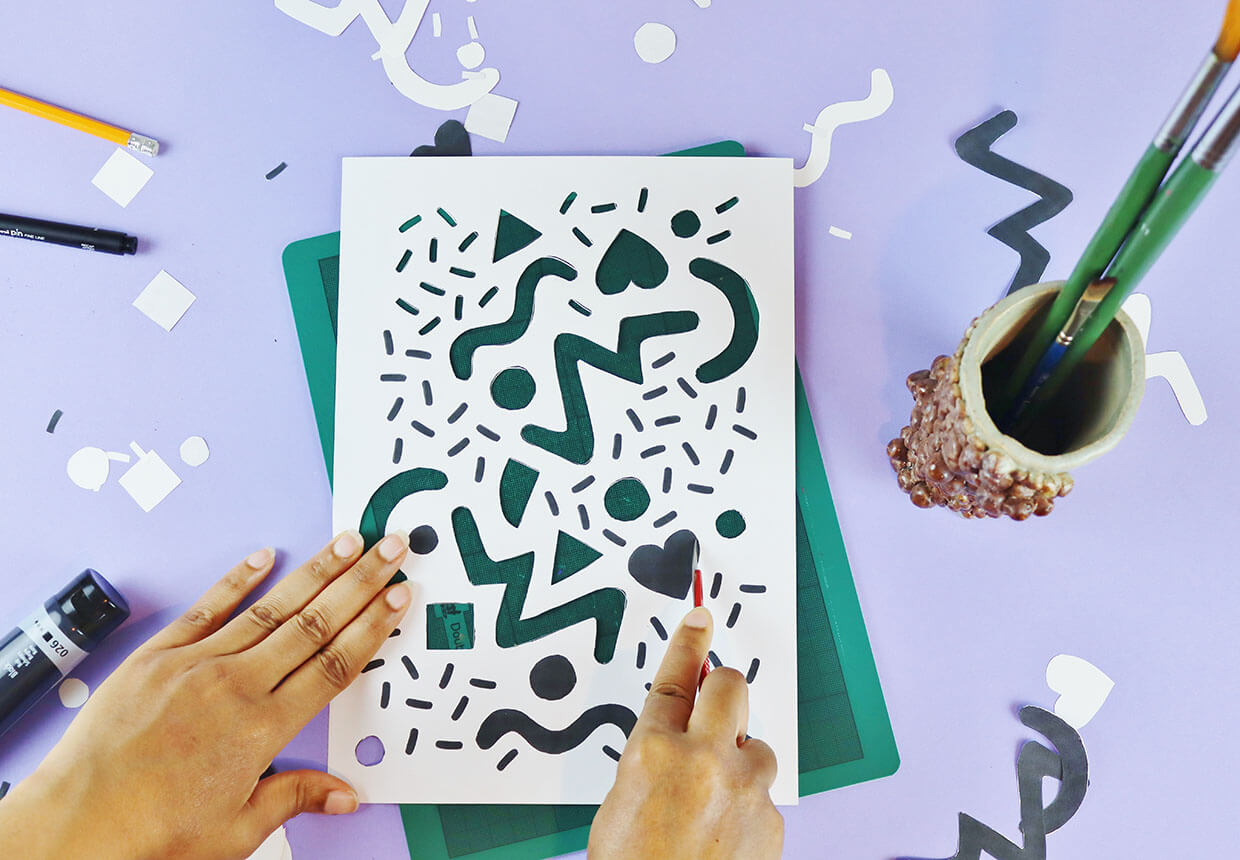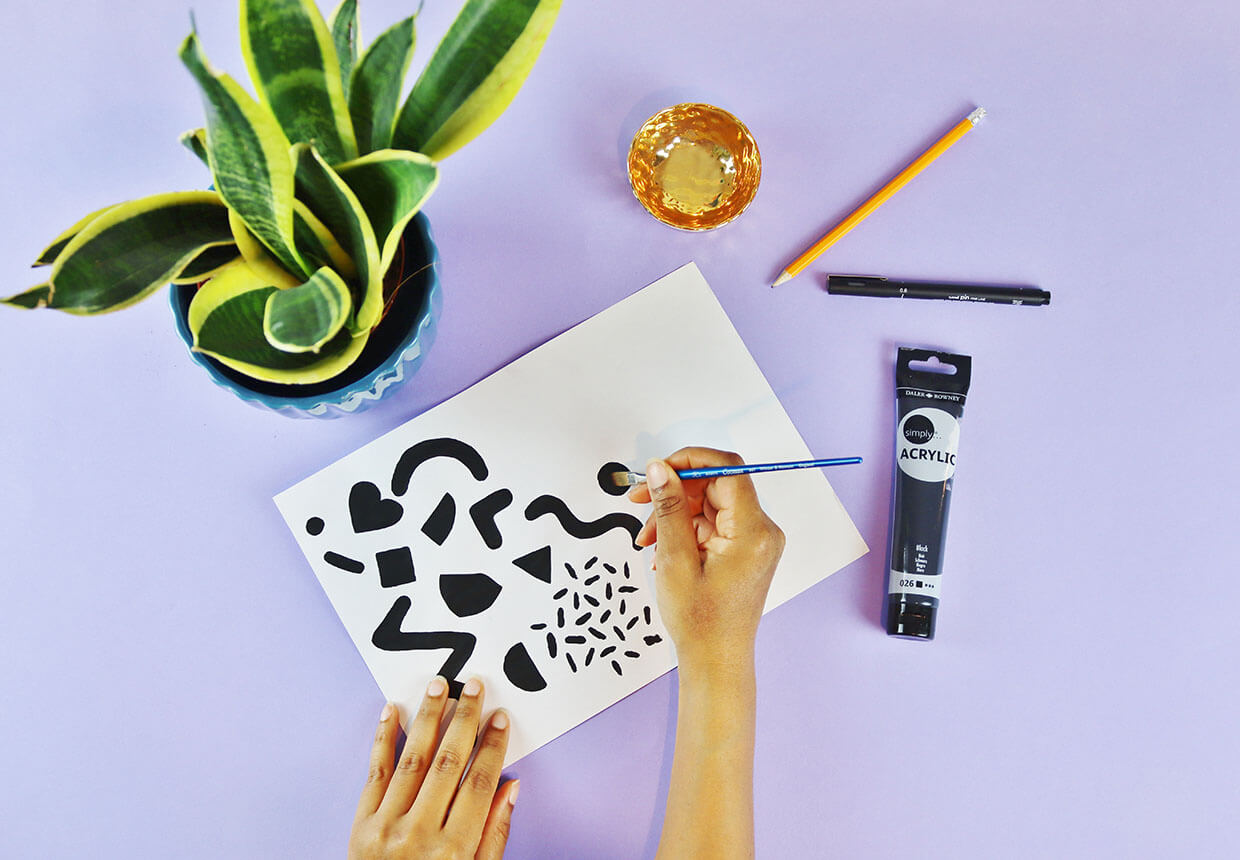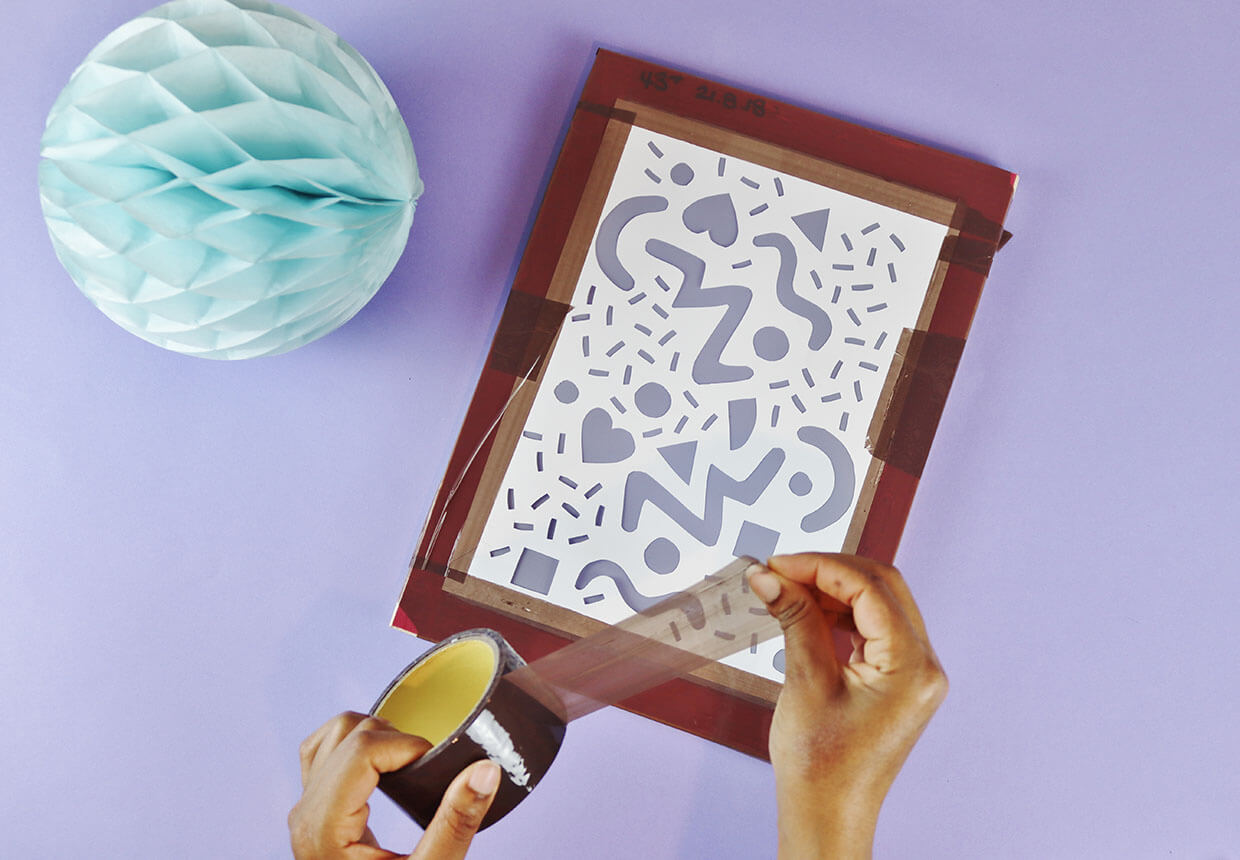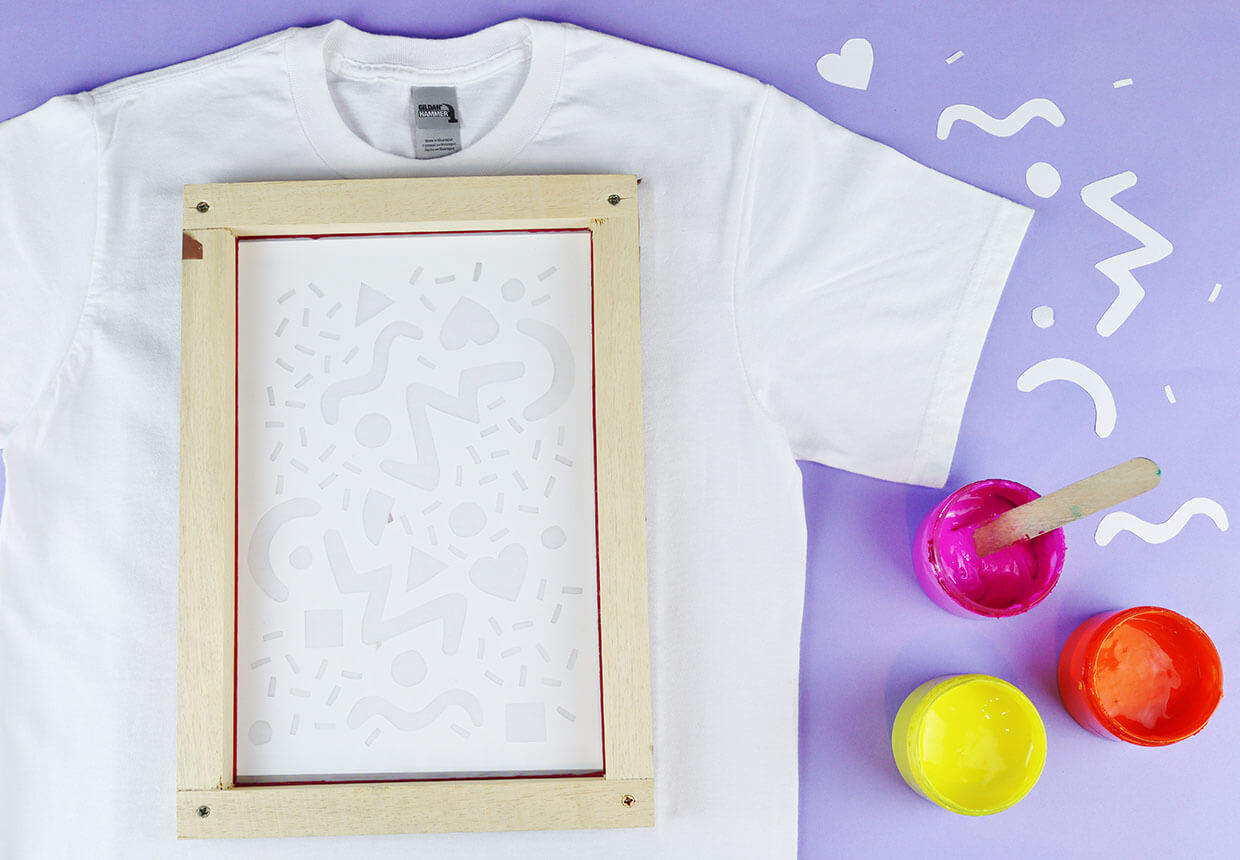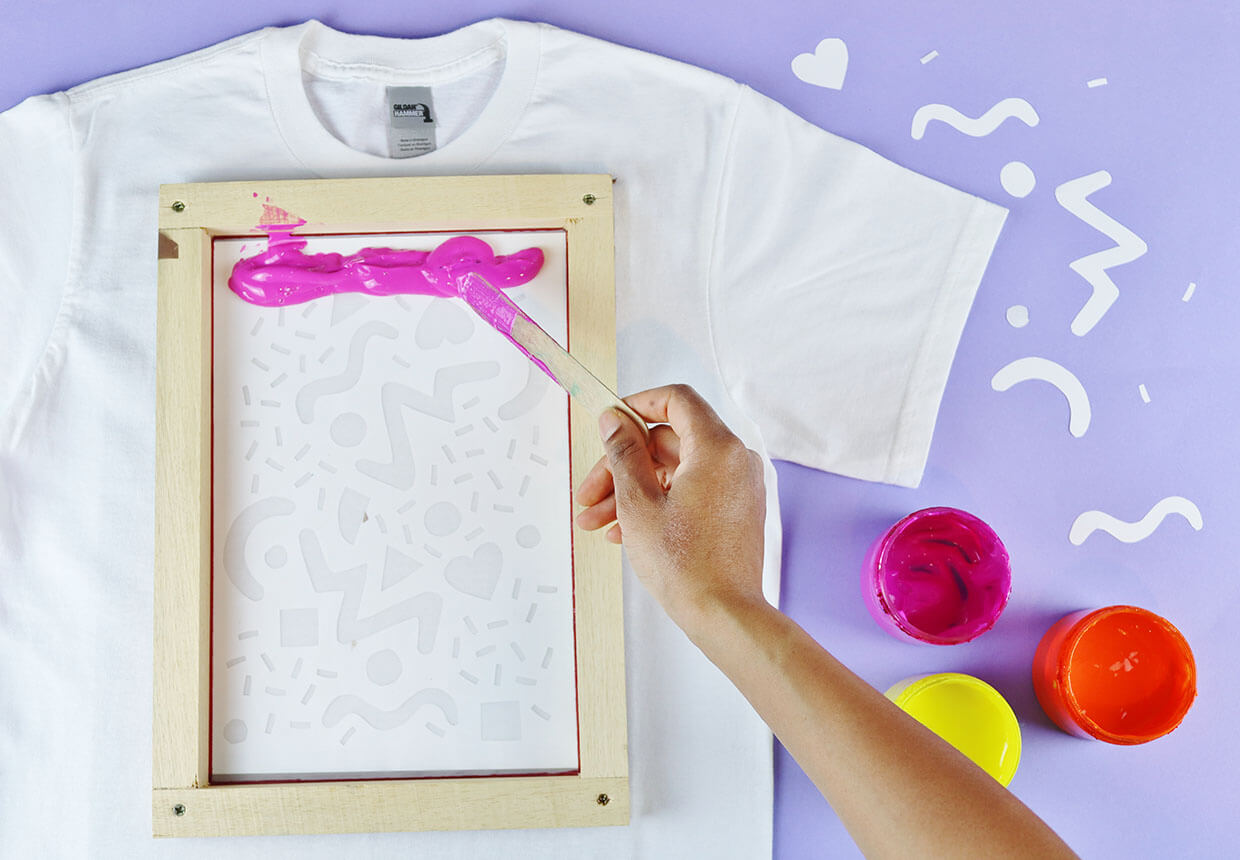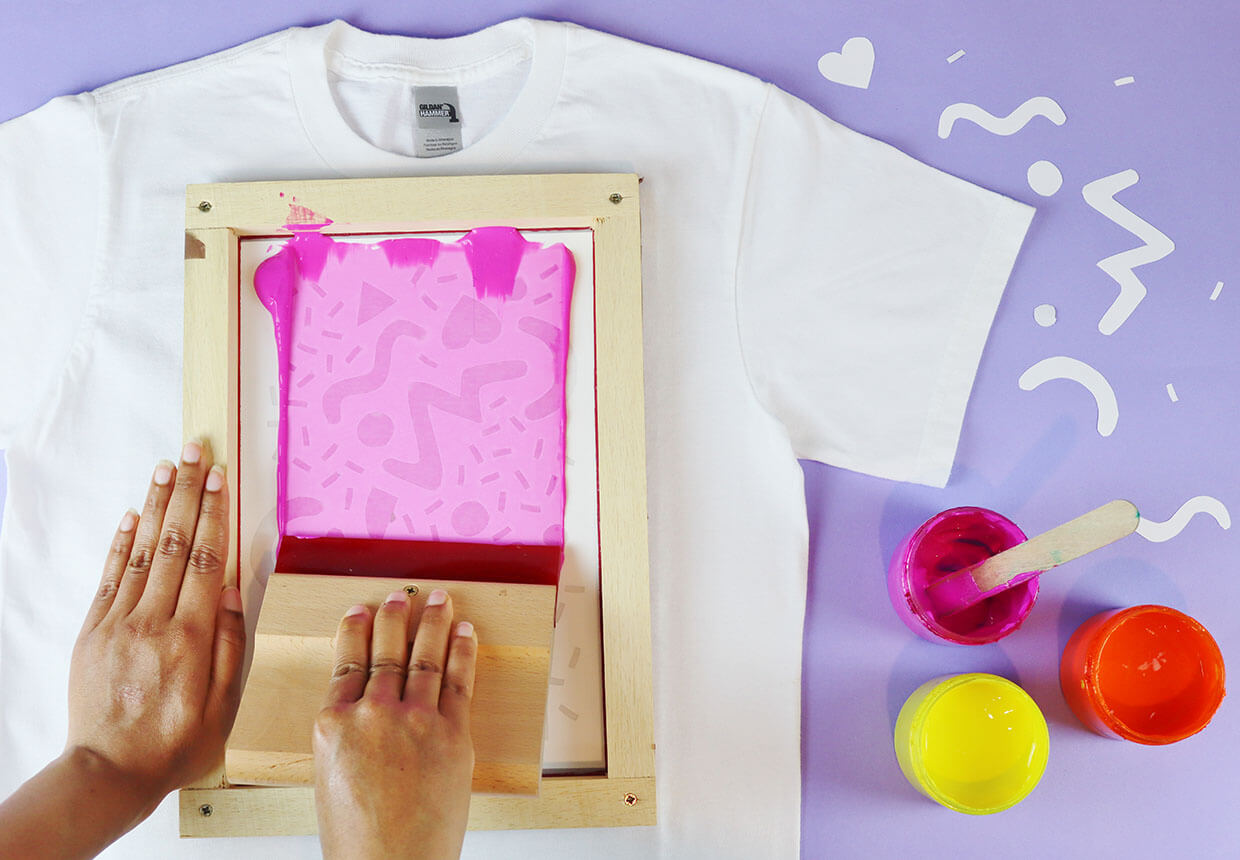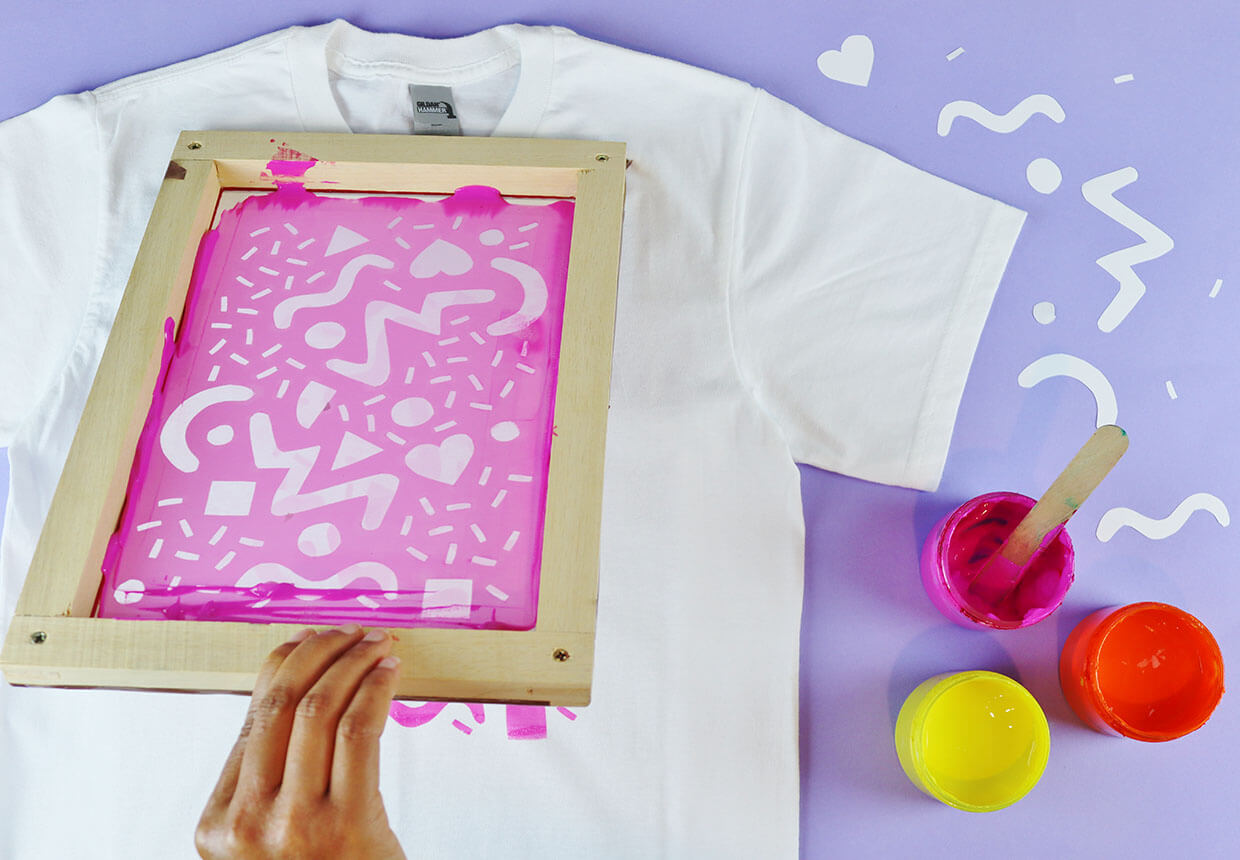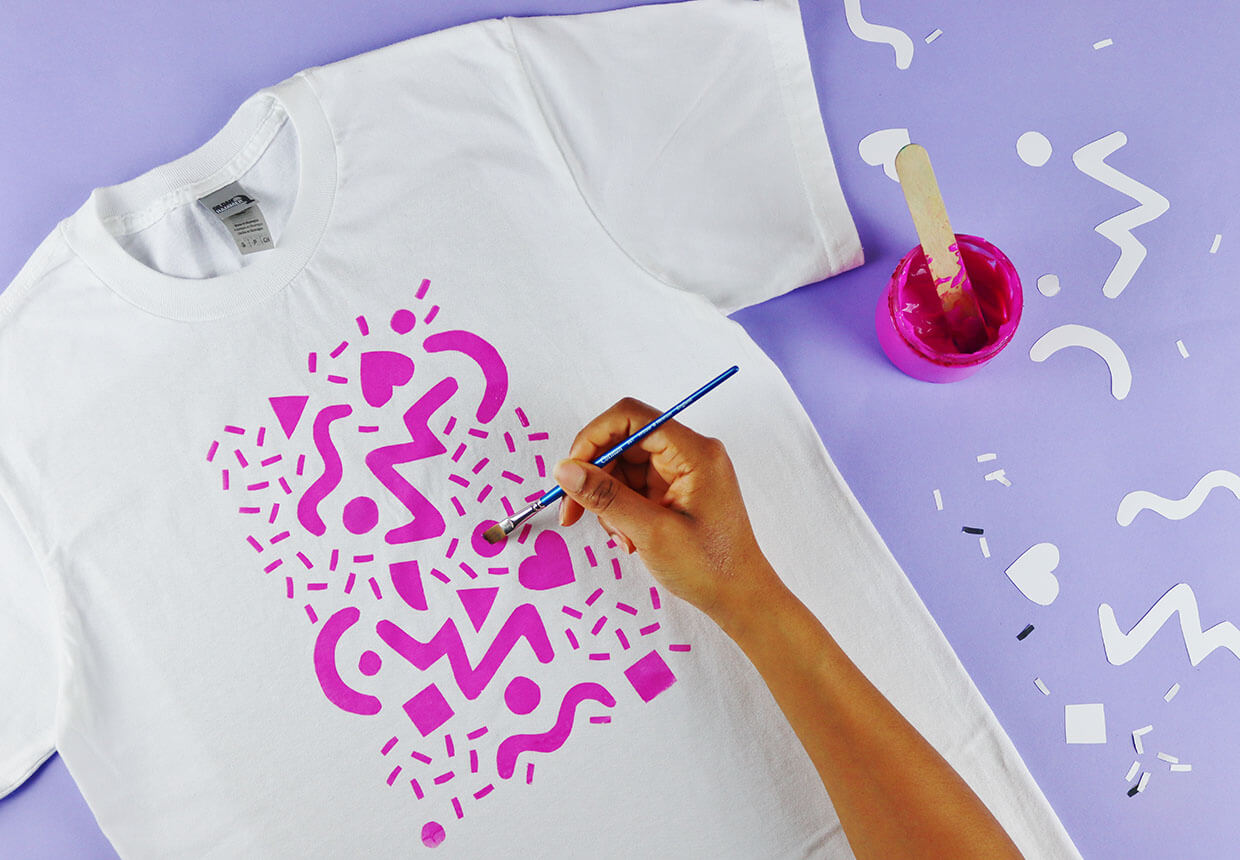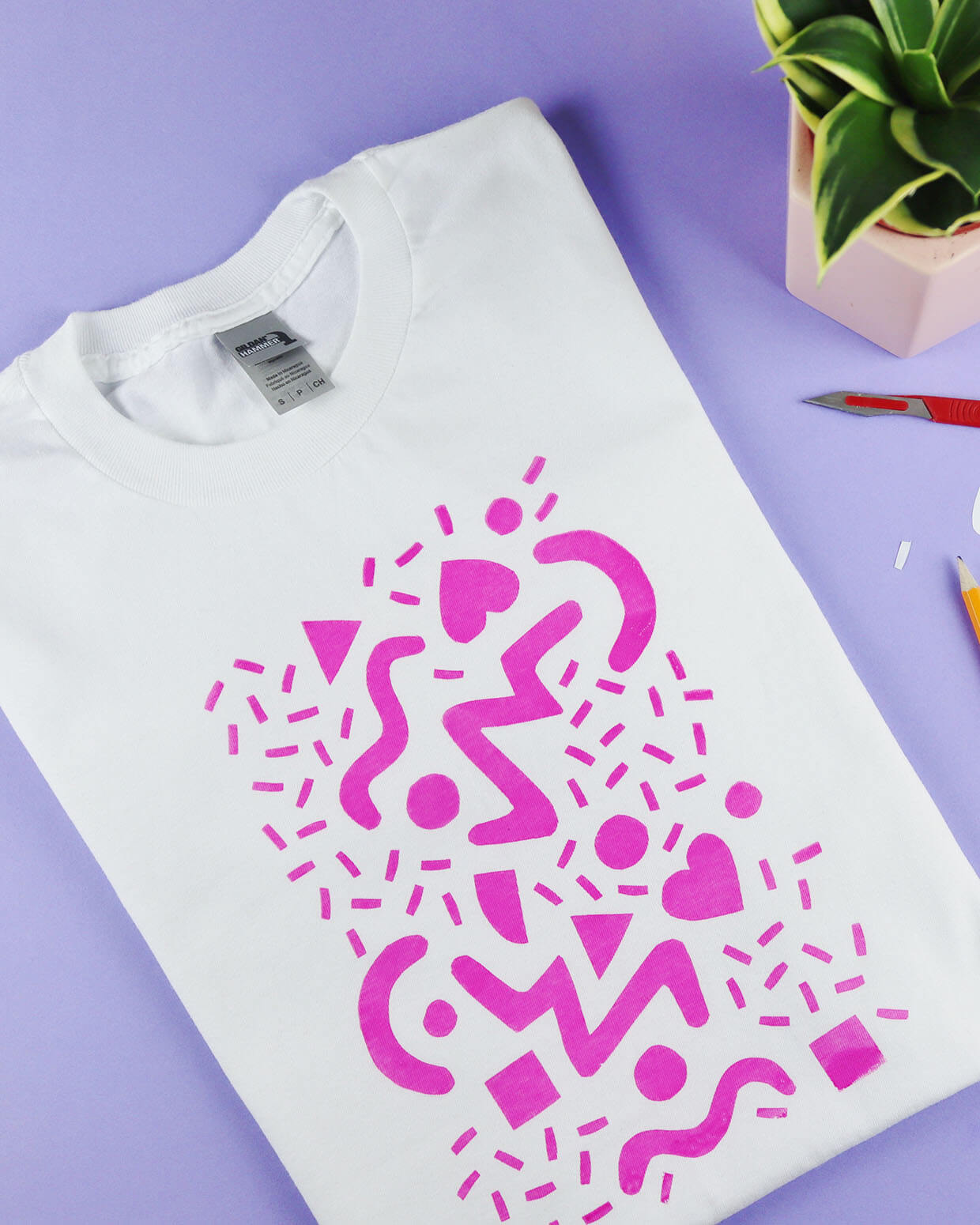Screen printing is a brilliant technique that I explored very early in my design education. I loved how you could create your own printed fabrics and wall papers then whip yourself up a quick statement t-shirt. Although professionally you would need to use big machines and chemicals, I’m going to show you a way of printing without all that fuss.
There are lots of screen printing kits on the market which are easy to search for in google. Once you have the tools you will be able to use this print method using a small space at home on a dining table.
For home use, I recommend using a wooden screen because you’ll be washing up in either your bathroom or kitchen sink which could be scratched if using an aluminium screen.
Screen printing is a technique which involves pulling ink through a fine mesh to reveal a printed design. You can print onto fabric or paper with just a change in the type of ink used. The inks you use are different so if printing onto fabric, check that it is a screen printing ink for fabric and likewise for paper if working on paper.
Tips for choosing designs
Look for inspiration online, or look up hashtags. Words like:
- Retro Scandinavian printed textiles
- Screen printed textiles
- Silhouette printed textiles
- Geometric prints
When cutting out your stencil and if you accidentally slice too far while making your cuts don't worry. These can be easily fixed with a small piece of masking tape.
Shirt printing DIY tips and advice
What to do if your prints are patchy
Possibly not enough ink on the screen when beginning to print. Add more ink to what you already have. This time be generous. Remember whatever you don't use can always be scooped up and put back into your paint pot.
You may have let the ink dry into your screen mesh which causes blockages. If this happens you'll need to wash your screen. Use the tiniest bit of washing up liquid in some warm water or spray on an all purpose kitchen cleaner. Gently (taking care not to push or make a hole in the mesh) scrub the affected area to remove dried on ink. Sometimes the ink will stain the mesh so it may still look blocked even though its not. One way to check is to hold the screen up to the light to check the mesh has no remaining blockages and then dry with paper towels or a hair dryer.
Tip: make sure your screen is completely dry before using it again with a fresh colour or stencil. If you're not sure if it is dry enough use your hair dryer just to lightly speed up the drying process.
Bleeding or smudged images
If you find that your image has an uneven edge as if the ink has bled causing a smear or smudge on the print, it maybe because you did too many pulls of ink or your screen may have moved slightly as you were pulling the squeegee. It might look like ghosting, when you can see two outlines of your design. When pulling the ink through your screen keep one hand on your screen and the other on the squeegee
Cleaning up
Once you’re finished with printing everything can be washed with warm soapy water. Use the coarse side of a washing up sponge or washing up brush to remove semi dried areas.
Never let the ink dry on to your screen mesh always wash while the ink is wet. This limits the possibility of getting a blocked screen which is annoying and can affect the quality of future print projects.
Read on to learn how to make your own silk screen t-shirts…
Looking for more screen printing projects to try? Make your own DIY tablecloth, try our DIY screen printing tea towels project or have a go at making this bee DIY cushion. If you want to stock up on ink before you start this project, take a look at our best screen printing ink guide.
